In many neighborhoods, there’s a special time between Christmas morning and Christmas dinner, when (weather permitting), people leave their houses and go outside to play with their new footballs, frisbees, drones, bicycles…. whatever they’ve gotten that is not appropriate for indoor use. This Christmas, my son got a new skim board so naturally, he wanted to go to the beach. Although it was a mild day for late December, it wasn’t exactly beach weather. Of course, I didn’t want to deprive him of the joy of taking it for a spin, so after breakfast and fish feeding, we headed out to our favorite beach: Emerald Isle, where we encountered a couple of dozen other people out soaking up the gray, cloudy day. Most were dressed in sweatshirts and coats, but a few adventurous souls were stripping down and taking polar plunges. As Finn began expertly gliding across the swash zone on his board, I took to my normal pastimes of taking photos and scanning the tideline for interesting flotsam.

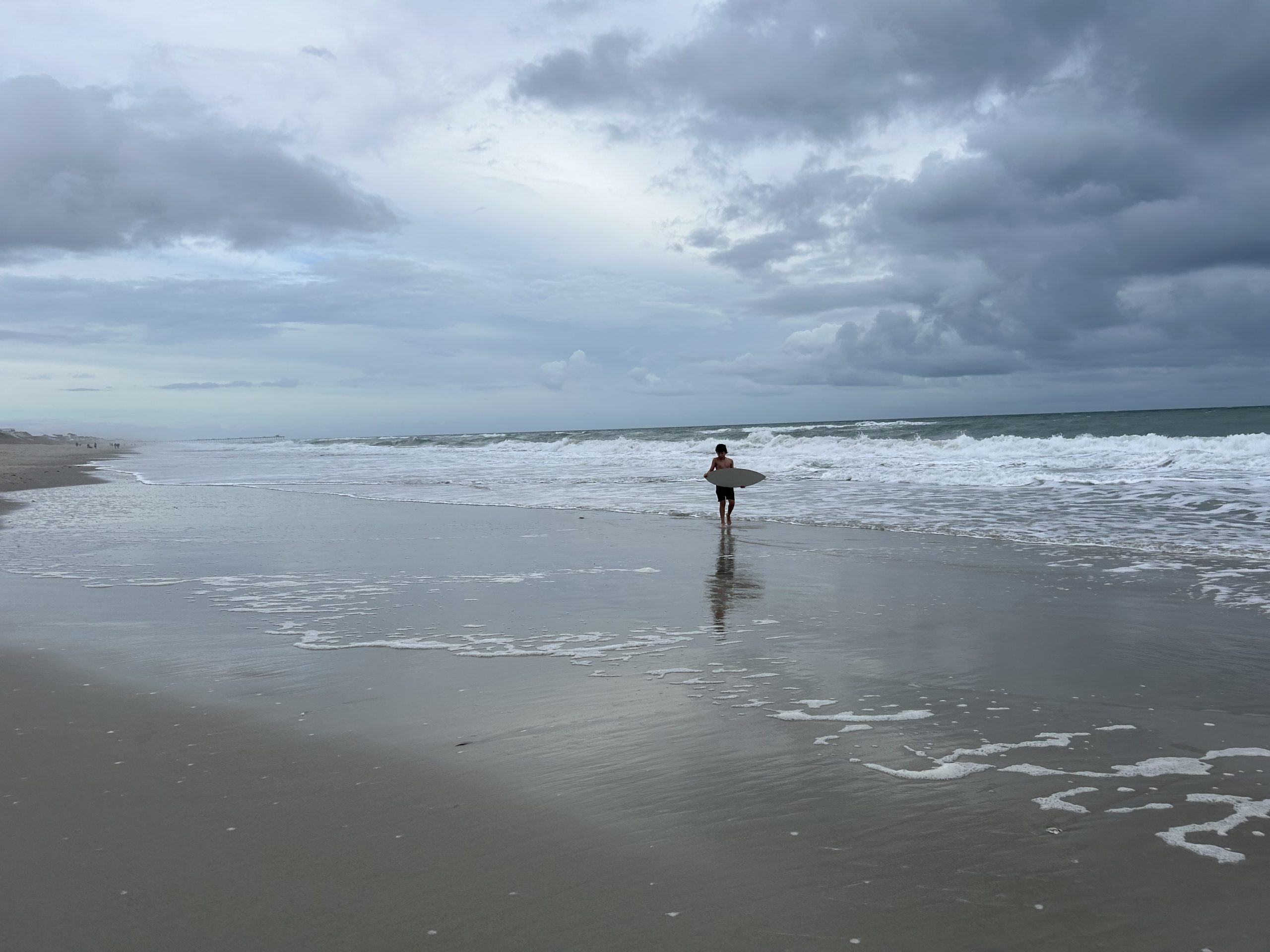
Perfect conditions for skim boarding




I noticed right away that there was quite a bit of sargassum weed washed up. This is not unusual, but it’s a bit less common in the winter months when prevailing winds are typically out of the north and/or west. On this day, there was a strong east wind blowing, which apparently was responsible for the seaweed on the beach.
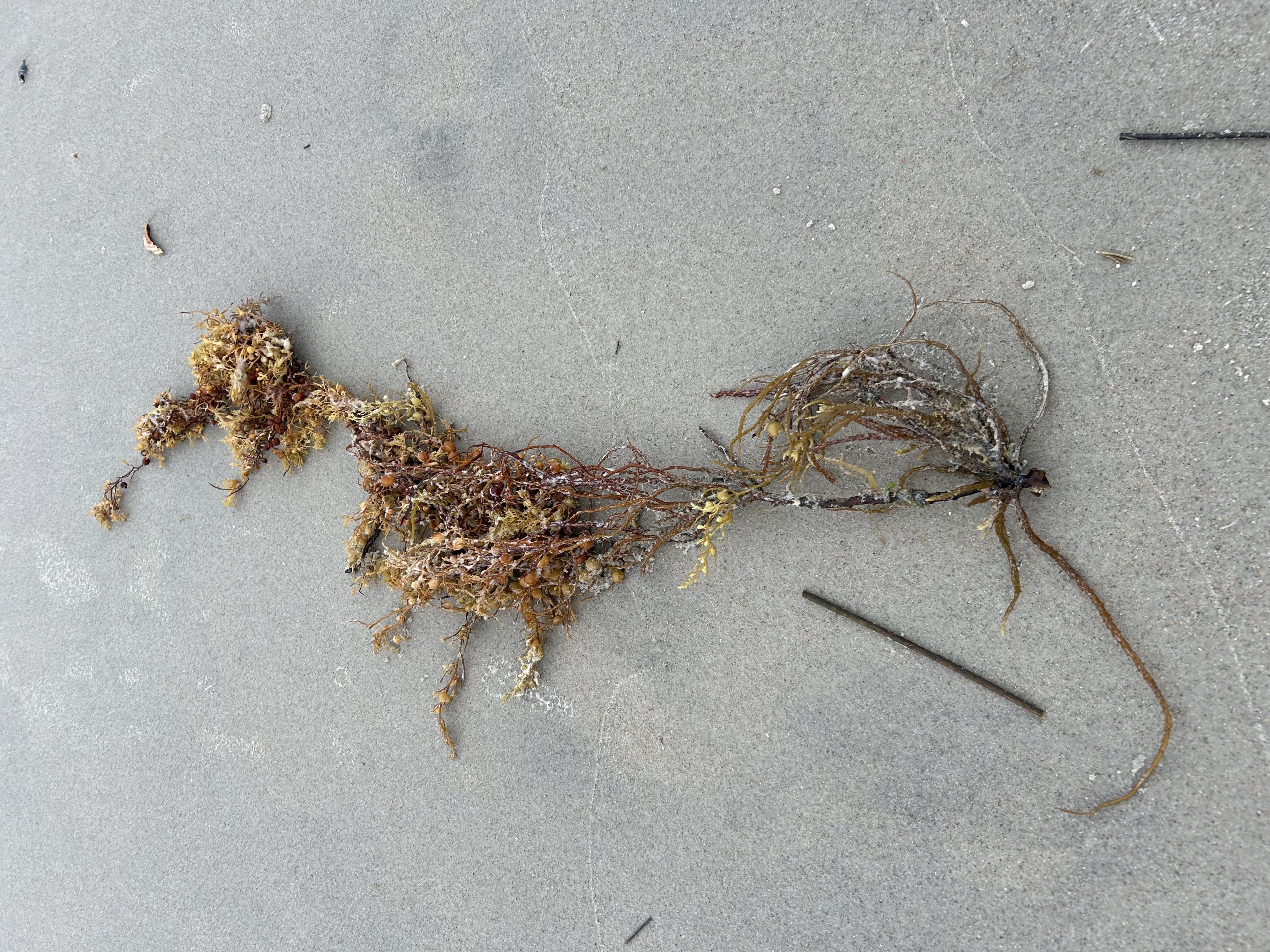
Sargassum filipendula with holdfast.

This little sanderling and I were the only ones who seemed concerned with what was in the Sargassum weed.
The sight of sargassum weed has excited me since i was around 10 years old when I first discovered the treasures that could be found in floating clumps of this brown algae. As a jaded adult, I’ve learned to temper my expectations when I come across this stuff on the beach, because A.) Once it’s washed ashore, there’s little chance of anything interesting still surviving on it, and B.) Our temperate, benthic species, Sargassum filipendula often breaks free and makes landfall after storms, rarely carrying any exotic hitchhikers along with it. A quick inspection revealed that at least some of the seaweed was indeed the benthic species as I could clearly see holdfasts that had been used to secure each “plant” to a rock.
It was difficult (at least to my untrained eye) to tell whether some of the other pieces were fragments of S. filipendula, or one of the tropical pelagic species (S. natans or S. fluitans). I was less interested in knowing the actual species than in determining whether there had been an influx of tropical water. You’d think I could tell be simply feeling the water, but it all felt freezing to me. Rather than breaking out books and keys to identify the Sargassum species, I decided to take the lazy way out and jog down the beach in search of other clues. It only took about 30 seconds before I found a smoking gun. There in the sand, lay a green seed from a red mangrove tree, obviously carried to this latitude by the Gulf Stream, and blown inshore by our latest winter storm.
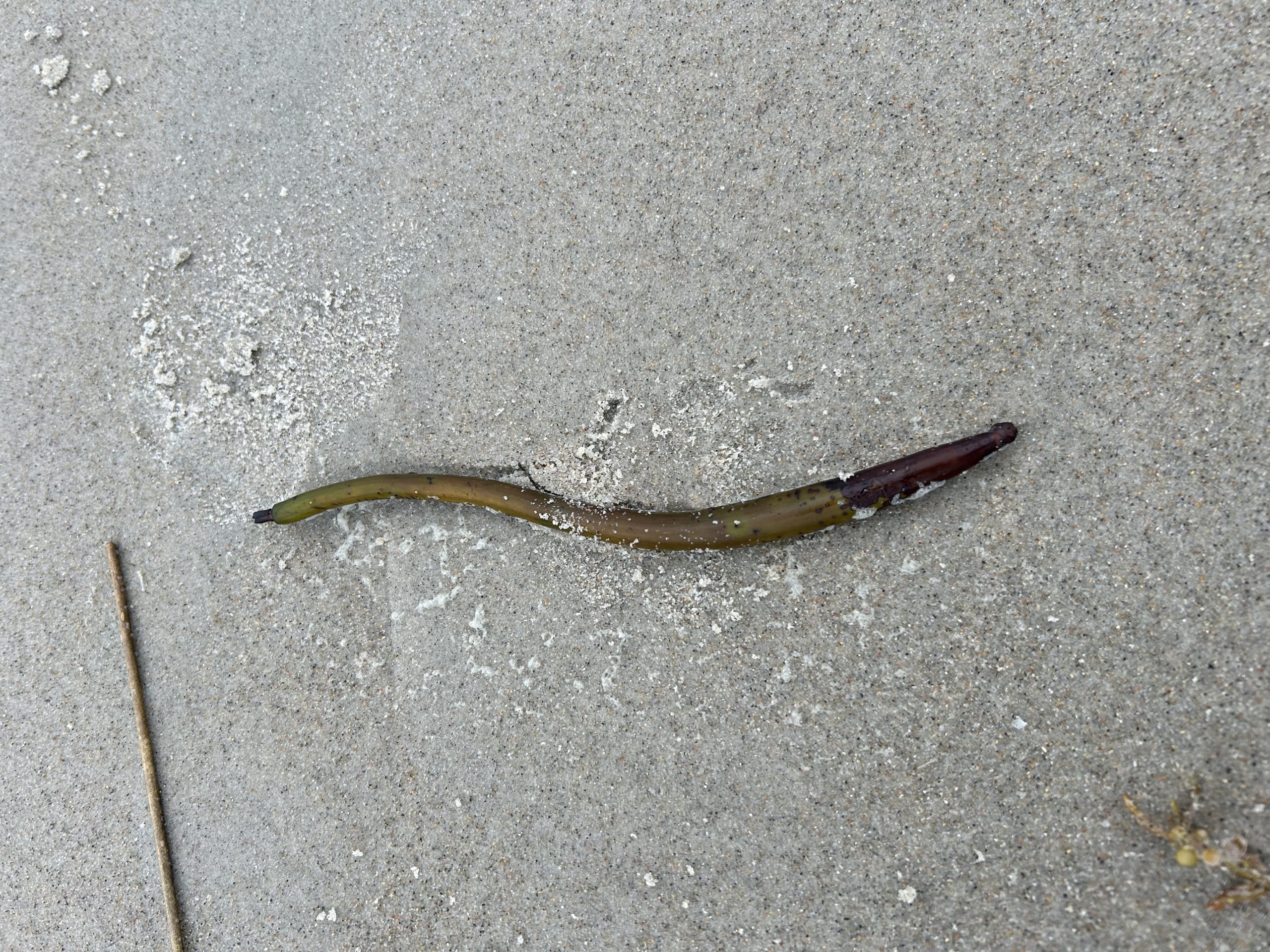
Red mangrove seed
Before long I had found several more mangrove seeds, as well as other signs of tropical life, including Portuguese Man-o-war, turtle grass rhizomes, and something that looked like a chestnut with gooseneck barnacles attached. Not much worth collecting for the fish room, but a subtle reminder that the Gulf Stream and the clear tropical water it carries are out there, waiting for me to find my next window of opportunity to jump in.
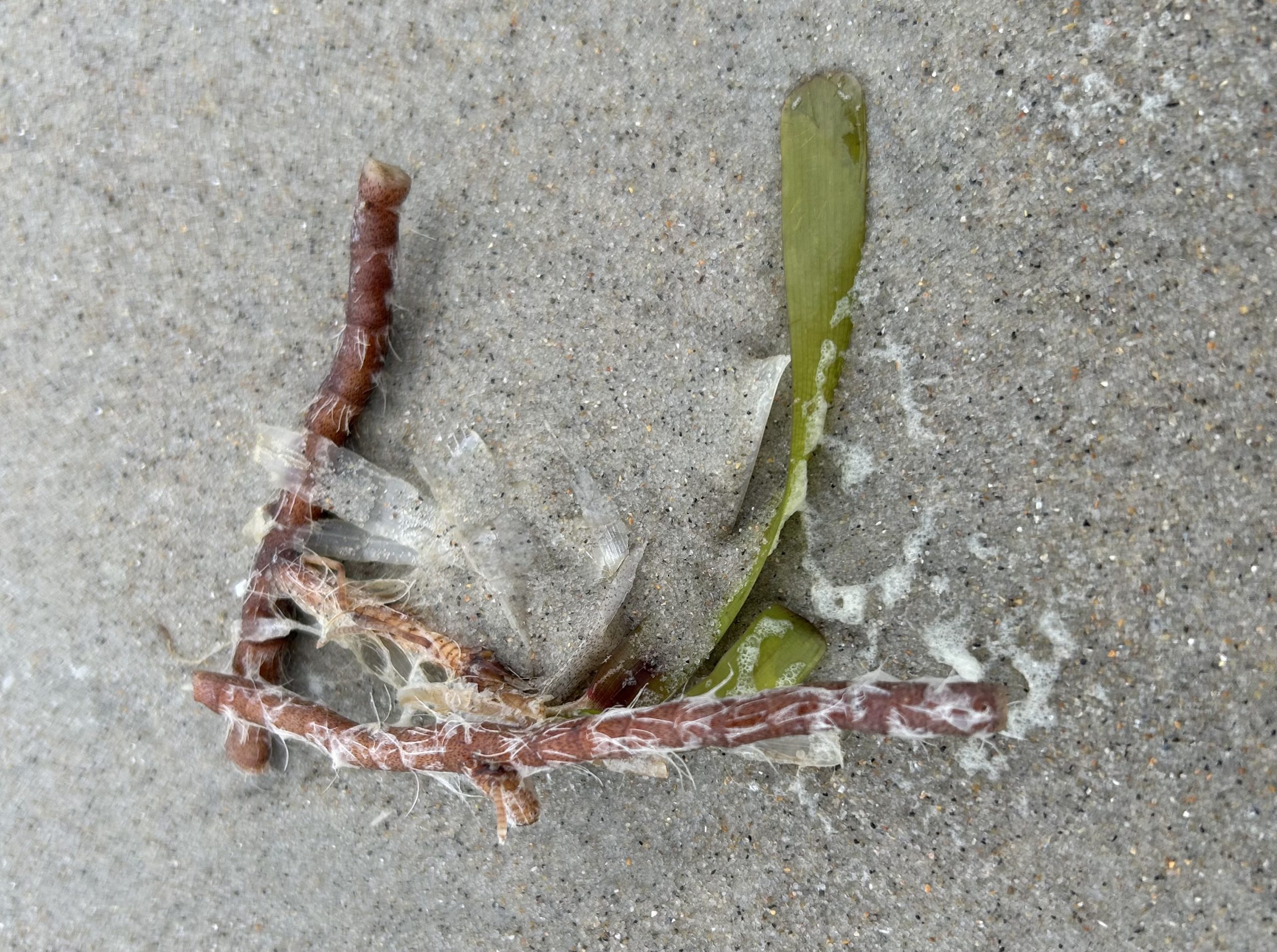
A turtle grass rhizome with a couple of intact leaves
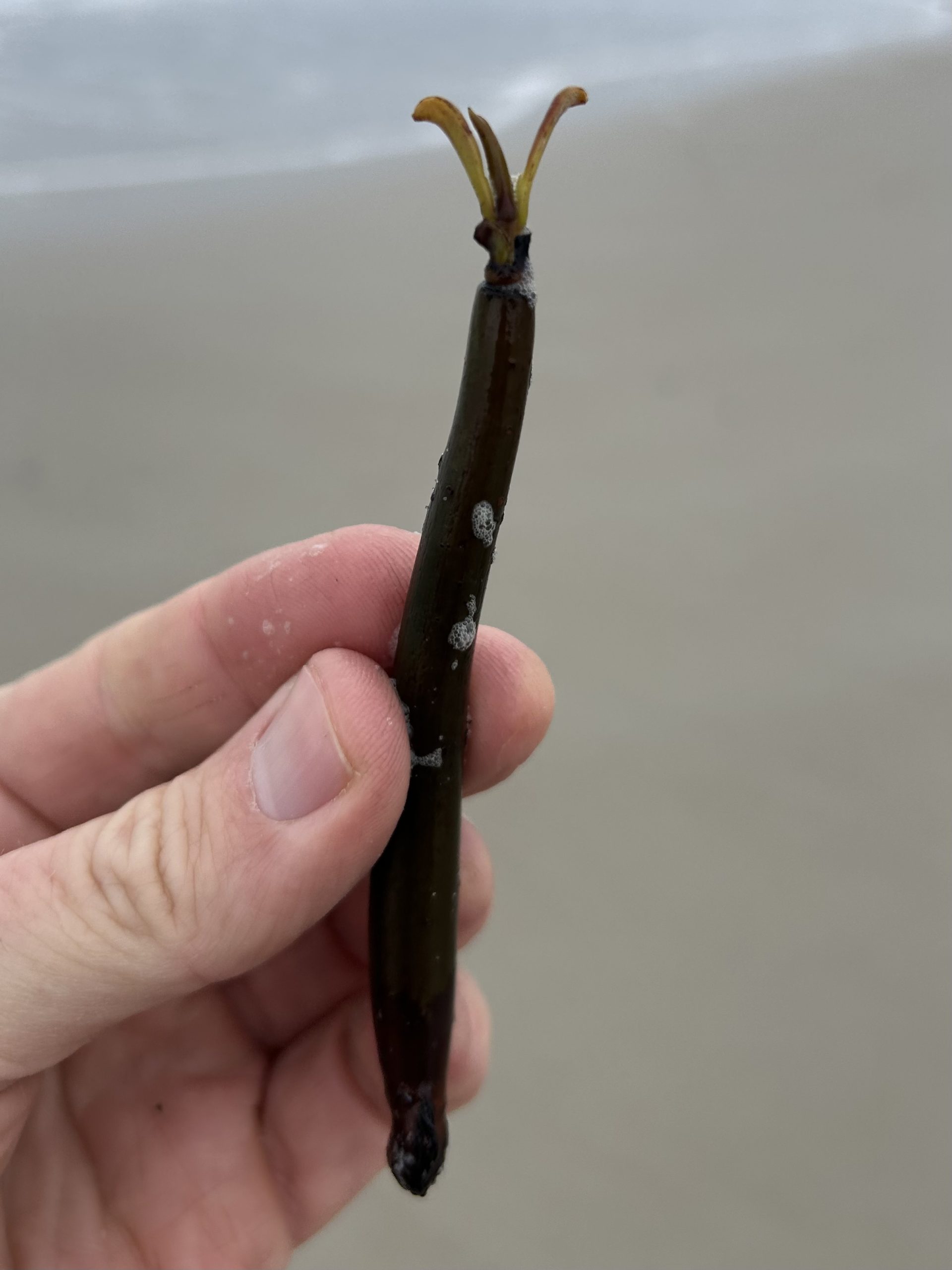
A sprouted red mangrove seed
By the end of our winter beach excursion, I had picked up around 30 mangrove seeds. We’ll attempt to propagate them at the Carteret Community College Aquaculture lab where they may one day serve to remove nutrients from one of our fish systems, or at very least. look cool as we pretend that’s what’s happening.
- Portuguese man-o-war
- Mixed media seaweed clump
- Gooseneck barnacles on some kind of seed
- The seed haul

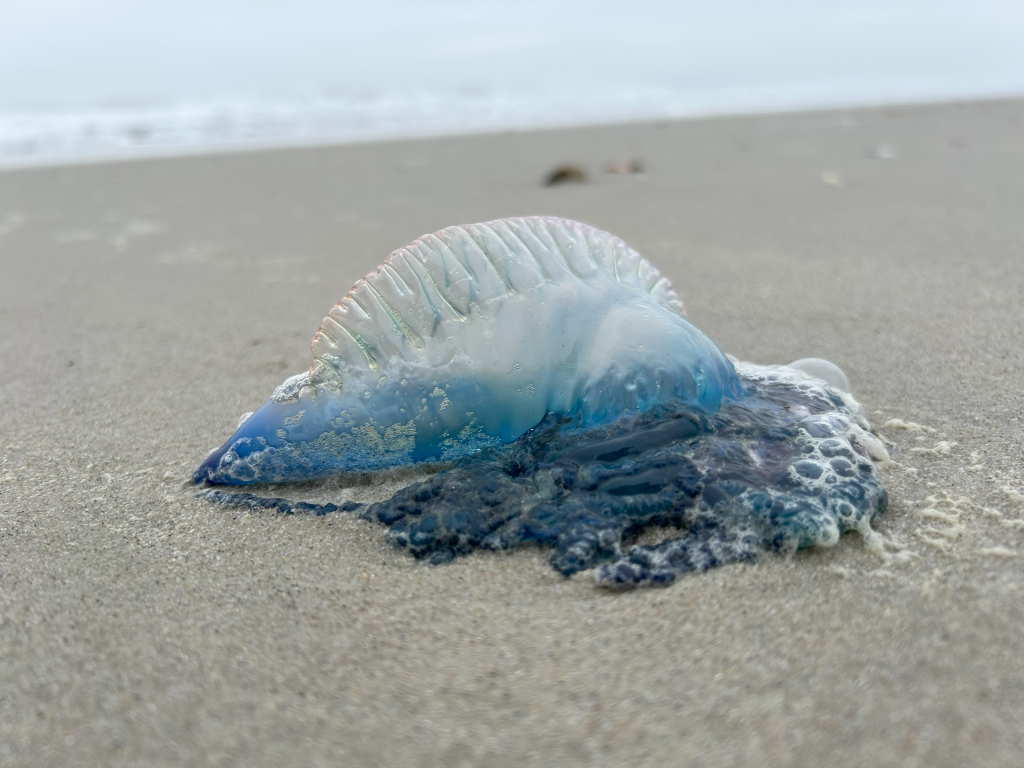
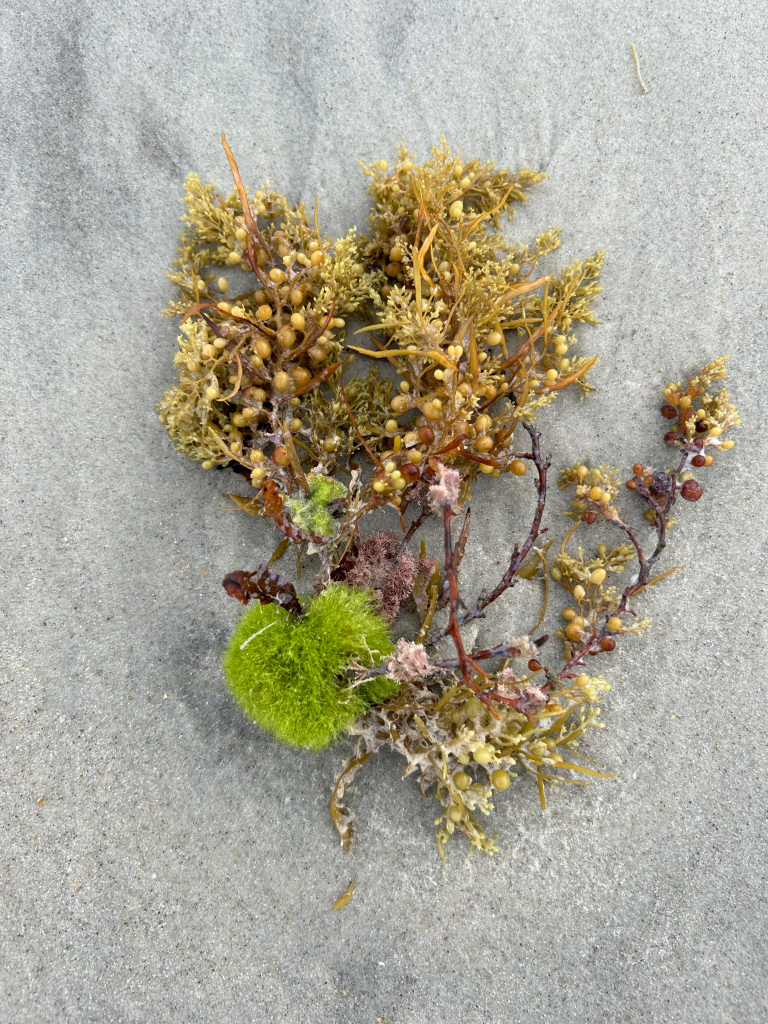
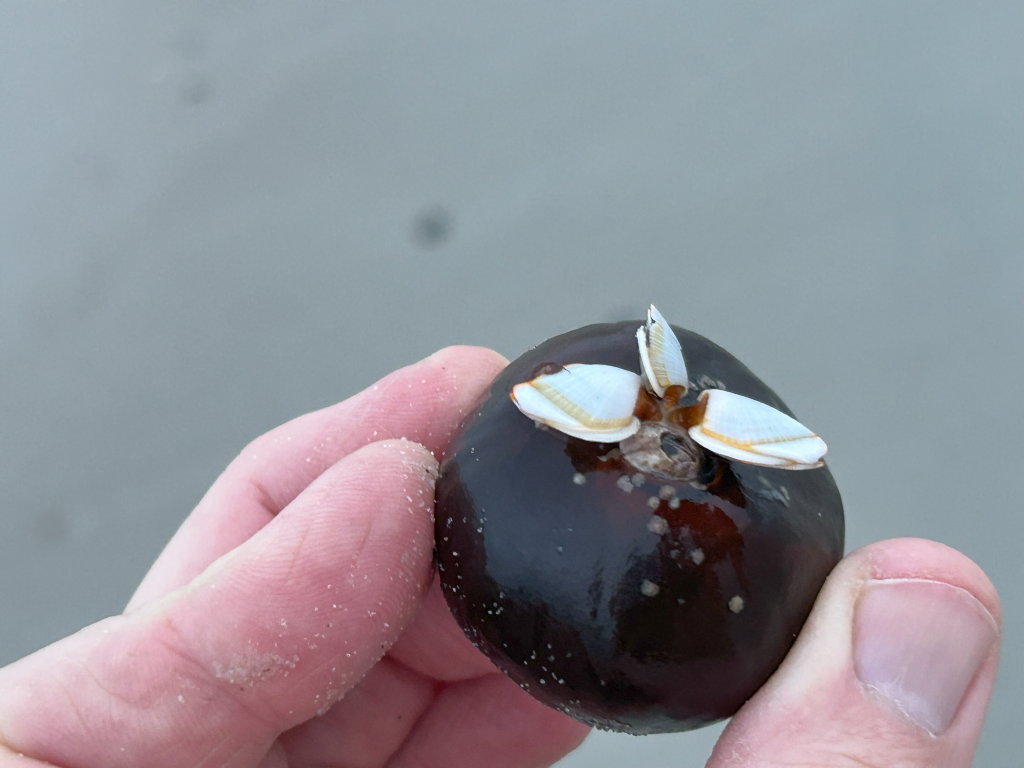
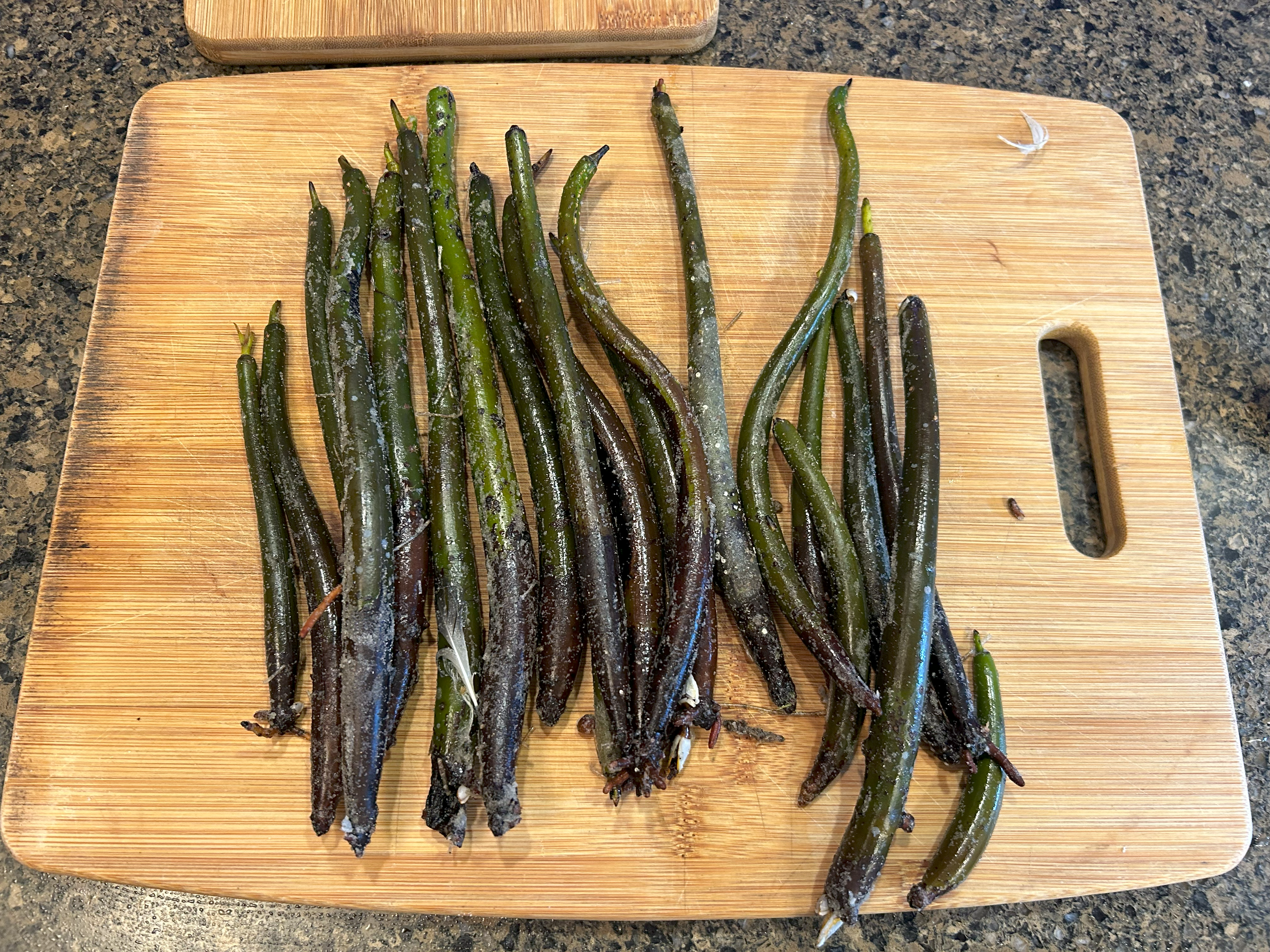



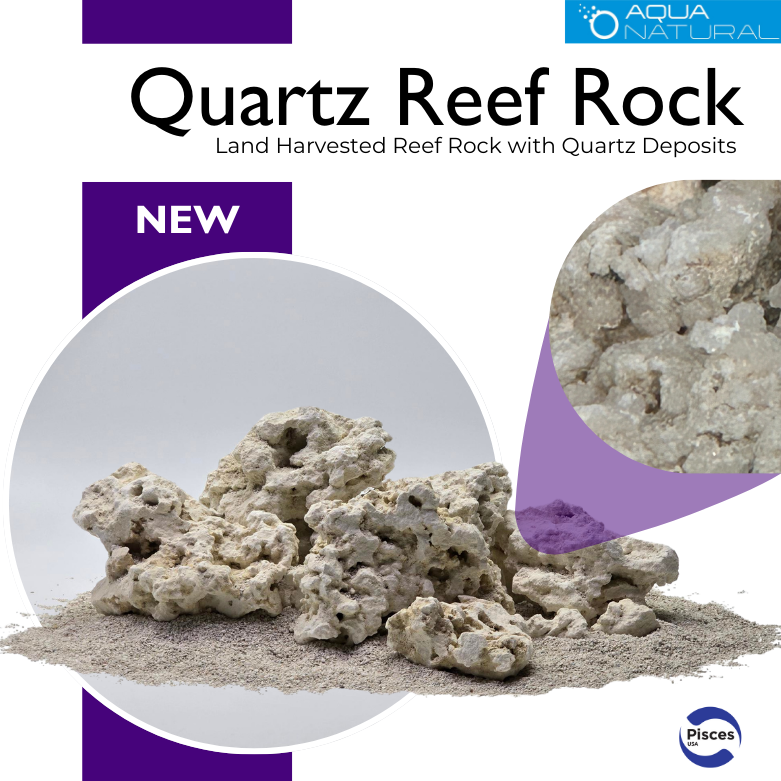


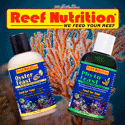


Awesome article! By the way, you should totally sub to Finn_2042